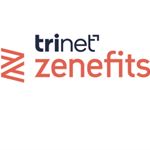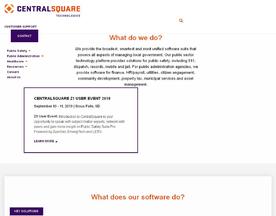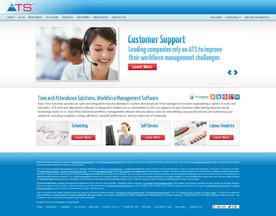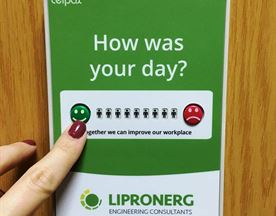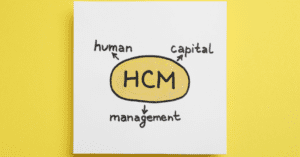How to develop top talent with 9 box talent review? Use 9 Box Review to assess & categorize talent, then tailor development plans for growth, matching potential with strategic opportunities.
A 9 Box Talent Review is a performance management tool that helps organizations identify and develop their top talent. The process involves evaluating employees on two dimensions: performance and potential. The resulting 9-box grid provides a visual representation of where each employee falls on the spectrum, from low performers with limited potential to high performers with high potential.

Understanding the 9 box talent review Grid is essential to conducting an effective talent review. The horizontal axis of the grid represents an employee’s current performance level, while the vertical axis represents their potential for growth and development. By plotting employees on this grid, managers can identify those who are high performers with high potential, low performers with limited potential, and everything in between. This information can then be used to develop targeted strategies for employee development and succession planning.
Preparing for a Talent Review involves gathering the necessary data and ensuring that all participants are familiar with the process. This may include gathering performance metrics, conducting employee assessments, and providing training on how to use the 9-box grid. By taking the time to prepare properly, organizations can ensure that the talent review process is fair, unbiased, and effective.
Key Takeaways
- The 9 Box Talent Review is a performance management tool that helps organizations identify and develop their top talent.
- Understanding the 9-Box Grid is essential to conducting an effective talent review.
- Preparing for a Talent Review involves gathering the necessary data and ensuring that all participants are familiar with the process.
For more information on how to conduct a successful 9 Box Talent Review, visit the Society for Human Resource Management’s website on the topic.
Understanding the 9-Box Grid
Origins and Evolution
The 9 Box Talent Review Grid is a talent assessment tool that was first introduced by McKinsey & Company in the 1970s. The tool was later popularized by General Electric (GE) in the 1980s as a way to assess the potential and performance of their employees. The 9-Box Grid has since been adopted by many other organizations as a way to identify and develop high-potential employees.
The 9-Box Framework
The 9-Box Grid is a two-dimensional matrix that plots an employee’s potential and performance on a scale of low to high. The potential axis measures an employee’s future potential, while the performance axis measures an employee’s current performance. The matrix is divided into nine boxes, with each box representing a different level of potential and performance.
Interpreting the Grid
Interpreting the 9-Box Grid requires a thorough understanding of the organization’s talent assessment process. The grid can be used to identify high-potential employees who may be suitable for leadership positions, as well as employees who may require additional training and development. It can also be used to identify employees who may be at risk of leaving the organization.
When interpreting the 9-Box Grid, it is important to consider both an employee’s potential and performance. An employee with high potential but low performance may require additional coaching and training to improve their performance. Conversely, an employee with high performance but low potential may not be suitable for leadership positions and may require a different career path within the organization.
To learn more about the 9-Box Grid and its applications, check out this article by McKinsey & Company.
Preparing for a Talent Review
Before conducting a 9 box talent review, it is important to prepare thoroughly to ensure that the process is effective and efficient. This section outlines some key steps to take when preparing for a 9 box talent review.
Setting Objectives
The first step in preparing for a 9 box talent review is to set clear objectives. This involves defining what the review is intended to achieve and what outcomes are expected. Objectives might include identifying high-potential employees, assessing succession readiness, or identifying areas where additional training or development is needed.
Gathering Data
The next step is to gather data on the employees who will be reviewed. This might include objective data such as performance ratings, potential assessments, and leadership competencies. It may also involve collecting feedback from managers, peers, and direct reports. HR professionals can play an important role in gathering and analyzing this data to ensure that it is accurate and unbiased.
Involving Stakeholders
Finally, it is important to involve key stakeholders in the 9 box talent review process. This might include senior leaders, managers, and employees themselves. Involving stakeholders can help to ensure that the review process is transparent and fair, and that the outcomes are aligned with organizational goals and values.
Overall, preparing for a talent review requires careful planning and attention to detail. By setting clear objectives, gathering objective data, and involving key stakeholders, organizations can ensure that their 9 box talent review process is effective and produces meaningful results.
Here is an external resource with more information on how to prepare for a 9 box talent review.
Conducting the Review Process
Assessing Employees
The first step in the 9 box talent review process is to assess employees based on their performance and potential. This assessment is done by evaluating the employees’ skills, knowledge, and abilities in their current role, as well as their potential to take on new challenges and responsibilities.
To assess employees accurately, it is important to use objective and measurable criteria. This can include metrics such as sales revenue, customer satisfaction ratings, project completion rates, and other relevant performance indicators. It is also important to consider the employees’ development needs and any feedback they have received from their managers or colleagues.
Feedback and Discussion
After assessing employees, the next step is to provide feedback and engage in a discussion with them. This feedback should be constructive and focused on areas where the employee can improve, as well as areas where they excel.
During the discussion, it is important to listen to the employee’s perspective and provide them with an opportunity to share their own feedback and ideas. This can help to build trust and encourage open communication between the employee and their manager.
Action Planning
Once the assessment and feedback process is complete, it is important to develop an action plan for each employee. This plan should outline specific steps that the employee can take to improve their performance and reach their full potential.
The action plan should be based on the employee’s development needs and should include measurable goals and objectives. It is also important to identify any resources or support that the employee may need to achieve their goals.
By following these steps, managers can make informed decisions about their employees’ performance and potential, and create a plan for their continued development and growth.
For more information on conducting effective 9 box talent reviews, check out this guide from the Society for Human Resource Management.
Addressing Bias and Fairness

Understanding Bias
One of the biggest challenges in conducting a 9 box talent review is to address the potential for bias. Biases can come in many forms, such as unconscious bias, confirmation bias, or halo effect, and can affect how managers rate their employees. To minimize the impact of biases, it is important to educate managers on the different types of biases and how they can influence their decision-making process.
Another way to address bias is to use objective data to support talent decisions. Objective data can include performance metrics, skills assessments, and behavioral assessments. By using objective data, managers can make more informed decisions and reduce the impact of biases on their ratings.
Promoting Objectivity
To promote objectivity in the 9 box talent review process, it is important to establish clear criteria for each box on the grid. This can include specific performance metrics, skills assessments, and behavioral assessments that align with the organization’s goals and values. Managers should also be trained on how to use the criteria effectively and consistently across all employees.
Another way to promote objectivity is to involve multiple stakeholders in the 9 box talent review process. This can include HR representatives, senior leaders, and other managers who can provide different perspectives on employee performance. By involving multiple stakeholders, managers can gain a more holistic view of an employee’s performance and reduce the impact of individual biases.
Overall, addressing bias and promoting fairness in the 9 box talent review process is crucial for ensuring that talent decisions are based on objective data and aligned with the organization’s goals and values. By educating managers on biases and promoting objectivity, organizations can make more informed talent decisions that lead to better business outcomes.
Here is a resource from the Society for Human Resource Management that provides more information on addressing bias and prejudice in the workplace.
Developing Talent
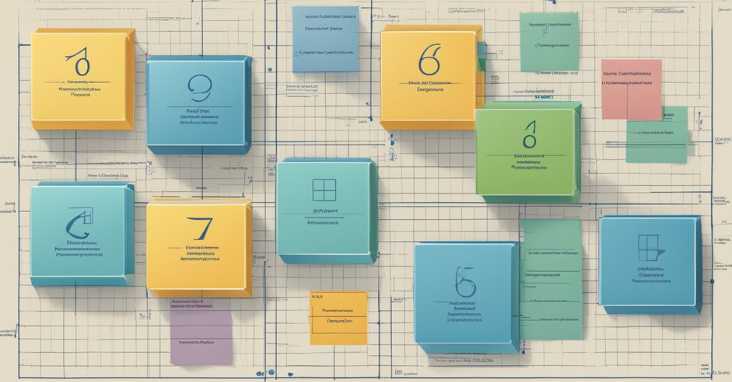
Developing talent is a crucial aspect of any organization. The 9 box talent review model provides a framework for identifying high-potential employees and assessing their development needs. Once employees have been identified as high-potential, it is important to provide them with the necessary resources and opportunities to help them grow and develop into future leaders.
Training and Coaching
One of the most effective ways to develop talent is through training and coaching. Training programs can help employees develop new skills and knowledge, while coaching can provide personalized guidance and support. By combining training and coaching, employees can receive a well-rounded development experience that addresses both their strengths and weaknesses.
Mentorship and Guidance
Mentorship and guidance are also important components of talent development. Mentors can provide valuable insights and advice based on their own experiences, while also serving as role models for high-potential employees. By working closely with mentors, employees can gain a better understanding of the organization and its culture, as well as the skills and qualities needed to succeed.
Growth Opportunities
Providing growth opportunities is another key aspect of talent development. These opportunities can take many forms, such as special projects, job rotations, and leadership development programs. By giving high-potential employees the chance to take on new challenges and responsibilities, organizations can help them develop the skills and experience needed to advance their careers.
Overall, developing talent is a critical part of any organization’s success. By providing training, coaching, mentorship, and growth opportunities, organizations can help their high-potential employees reach their full potential and become future leaders. For more information on talent development, check out this link from the Society for Human Resource Management.
Succession and Career Planning
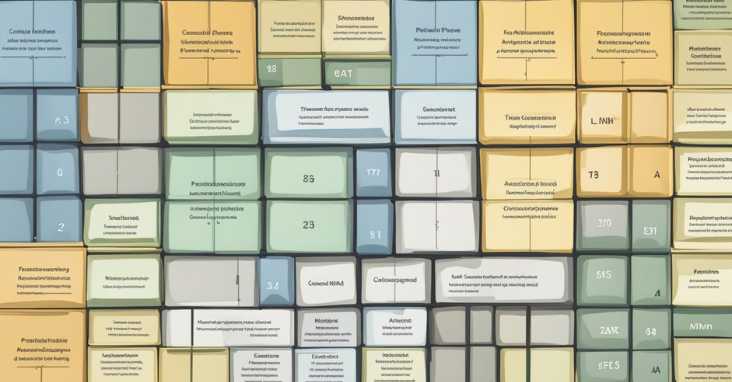
Identifying Potential Leaders
One of the primary goals of the 9 box talent review is to identify potential leaders within an organization. By analyzing employee performance and potential, organizations can gain insight into which employees are most likely to succeed in leadership positions.
Using the 9 box grid, HR professionals and managers can identify employees who possess the necessary skills, experience, and potential to take on leadership roles in the future. This information can be used to create targeted development plans that help employees build the skills they need to succeed in leadership positions.
Creating Development Paths
Once potential leaders have been identified, organizations can create development paths that help employees build the skills they need to succeed in leadership roles. These development paths can include a variety of activities, such as training programs, mentorship opportunities, and stretch assignments.
By providing employees with targeted development opportunities, organizations can help them build the skills they need to succeed in leadership roles. This not only benefits the individual employee but also helps ensure that the organization has a strong pipeline of future leaders.
To learn more about how to create effective development paths for potential leaders, check out this article from the Society for Human Resource Management.
Leveraging the 9-Box for Organizational Growth

The 9 Box talent review is a powerful tool for organizations looking to grow and develop their talent pool. By identifying high potential employees and addressing areas of improvement, organizations can strategically plan for the future and enhance employee engagement.
Strategic Workforce Planning
The 9-Box can be used as part of a strategic workforce planning process to ensure that the organization has the right talent in place to achieve its goals. By identifying employees who have the potential to take on leadership roles in the future, organizations can develop targeted training and development plans to help these employees reach their full potential. This not only benefits the individual employee but also the organization as a whole, as it ensures that there is a pipeline of talent ready to step up when needed.
Enhancing Employee Engagement
The 9-Box can also be used to enhance employee engagement by providing employees with a clear understanding of their strengths and areas for improvement. By having open and honest conversations about performance, employees are more likely to feel valued and supported by the organization. This can lead to increased job satisfaction and ultimately, higher retention rates.
To learn more about how to leverage the 9-Box for organizational growth, check out this article from the Society for Human Resource Management.
Evaluating and Improving the 9-Box Process

The 9 Box Talent Review is an essential HR tool that helps organizations identify and develop their top talent. However, like any other performance review process, it requires regular evaluation and improvement to ensure its effectiveness. In this section, we will explore how organizations can assess and enhance their 9-Box process.
Assessment of Current Practices
To evaluate the current state of the 9-Box process, organizations can use various methods, including surveys, focus groups, and interviews. These assessments can reveal valuable insights into the strengths and weaknesses of the process, as well as identify areas for improvement.
One common issue with the 9-Box process is that it can be too rigid, and the criteria used to evaluate employees may not reflect the organization’s current needs. Therefore, it is crucial to ensure that the criteria used in the 9-Box process align with the organization’s strategic goals and are adaptable to changing circumstances.
Another essential factor to consider when assessing the 9-Box process is the quality of the data used to evaluate employees. Organizations should ensure that the data collected is accurate, relevant, and unbiased. This can be achieved by providing training to managers and HR professionals on data collection and analysis.
Continuous Improvement
Once the current state of the 9-Box process is assessed, organizations can work on improving it. Continuous improvement can be achieved by implementing changes based on the feedback received from the assessment.
One way to improve the 9-Box process is by increasing the frequency of performance reviews. Regular reviews can help managers and employees identify areas for improvement and provide opportunities for development.
Another way to improve the 9-Box process is by incorporating employee feedback into the evaluation process. This can help ensure that the process is fair and transparent and can also increase employee engagement and motivation.
Organizations can also consider using technology to enhance the 9-Box process. For example, using data analytics tools can help identify trends and patterns in employee performance, making it easier to identify top talent and potential areas for improvement.
In conclusion, the 9 Box Talent Review process is a valuable tool for identifying and developing top talent. However, like any other HR tool, it requires regular evaluation and improvement to ensure its effectiveness. By assessing current practices and implementing changes based on feedback, organizations can enhance the 9-Box process and improve employee performance and engagement.
Here is a link to an external resource that provides a comprehensive guide on how to assess the effectiveness of the 9 Box Talent Review process.
Frequently Asked Questions

How do you effectively utilize a 9 box talent review template?
To effectively utilize a 9 box talent review template, it is important to have a clear understanding of the organization’s goals and objectives. This will help in identifying the key competencies and skills required for success in the organization. It is also important to have a standard set of criteria for evaluating employees and to ensure that the evaluation process is fair and unbiased.
What are the key components of the McKinsey 9 box talent matrix?
The key components of the McKinsey 9 box talent matrix include performance and potential. Performance is measured based on an employee’s current job performance, while potential is measured based on an employee’s ability to develop and progress in their career. The matrix is divided into three categories: high potential/high performance, high potential/low performance, and low potential/low performance.
In what ways can numbers be integrated into a 9 box talent review?
Numbers can be integrated into a 9 box talent review by assigning numerical scores to various competencies and skills. These scores can then be used to evaluate an employee’s performance and potential. It is important to ensure that the scoring system is consistent and objective.
What are some common questions to ask during a 9-box assessment?
Some common questions to ask during a 9-box assessment include:
- What are the employee’s strengths and weaknesses?
- What are the employee’s career goals and aspirations?
- What additional training or development does the employee need?
- How can the employee be better supported in their role?
How can you create a 9 box talent review using Excel?
Creating a 9 box talent review using Excel involves creating a table with performance and potential on the x and y-axis, respectively. Each employee is then plotted on the chart based on their performance and potential scores. There are also pre-made templates available online that can be customized to fit an organization’s needs.
What are the benefits and limitations of the 9 box talent grid in modern performance management?
The benefits of the 9 box talent grid include identifying high-potential employees, creating a clear career path for employees, and improving overall performance management. However, the limitations include the potential for bias and the inability to capture all aspects of an employee’s performance and potential. It is important to use the 9 box talent grid as part of a larger performance management system that includes regular feedback and coaching.
One external resource that provides additional information on the 9 box talent review is HR Technologist, a website that provides insights and information on HR technology and trends.



